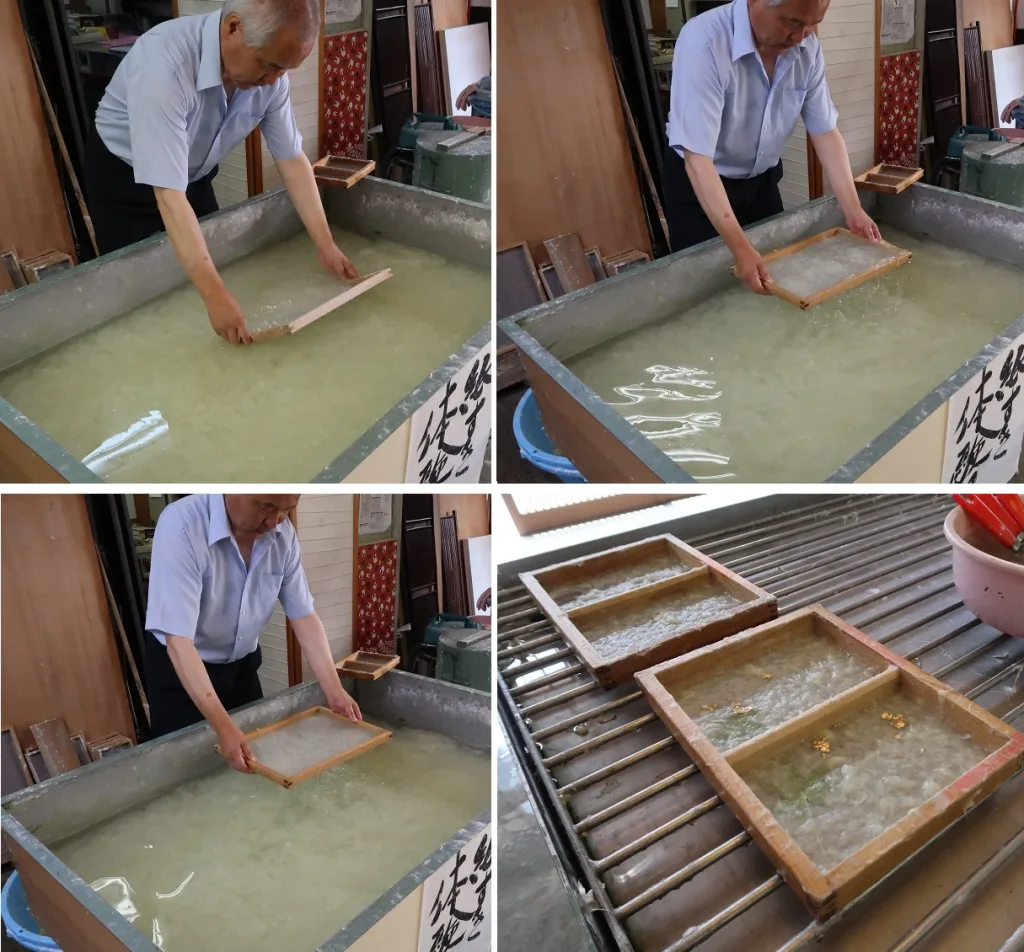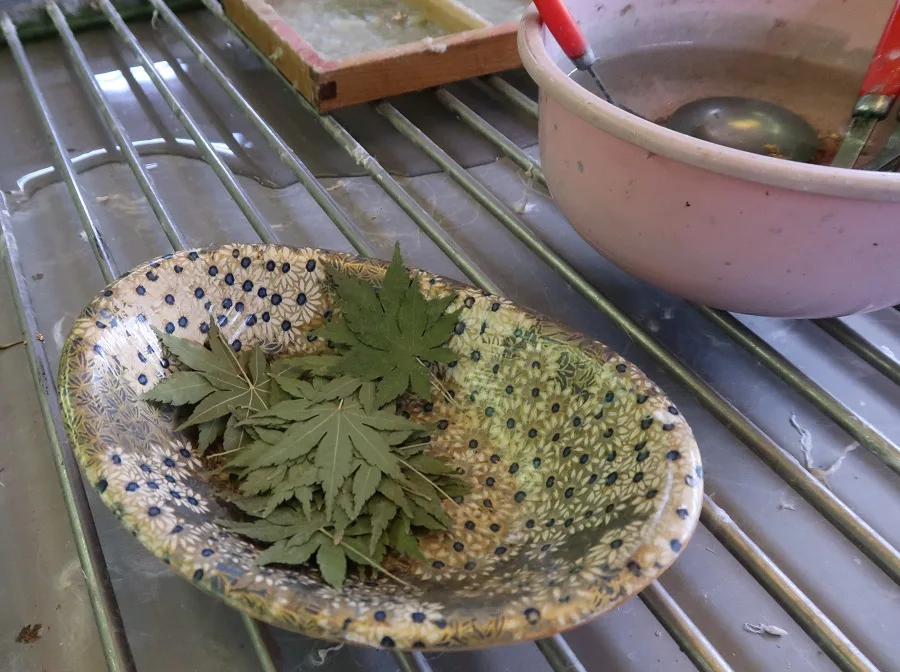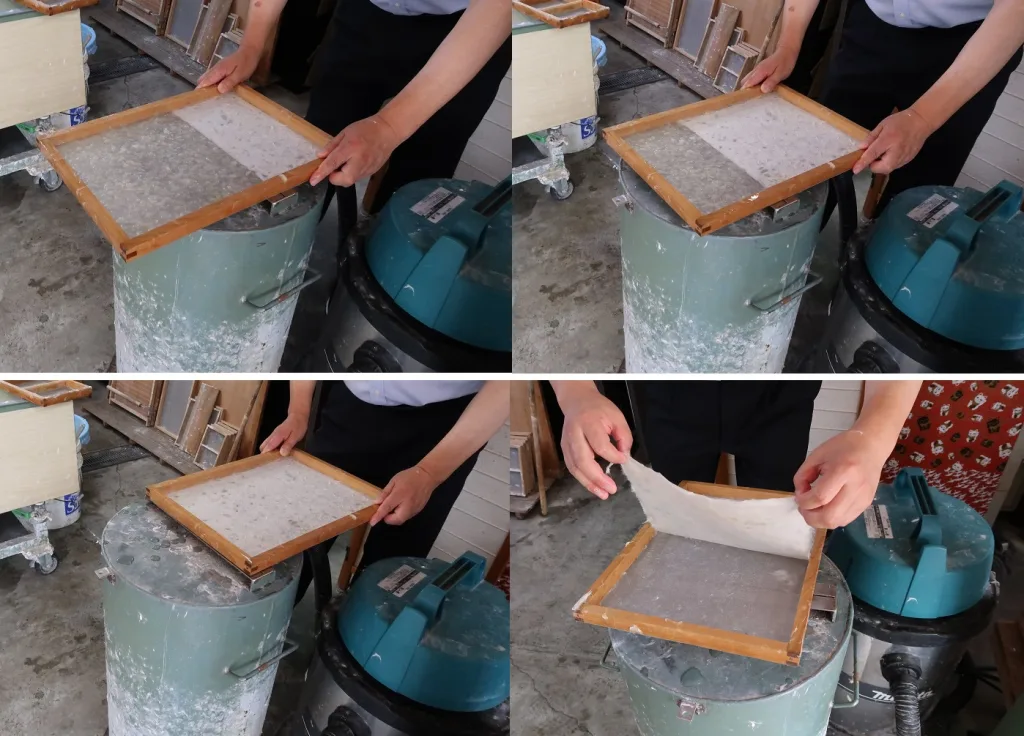投稿日:2023年07月07日
In the Edo period, the paper making industry prospered in Tsuwano, contributing to the local economy and raising the status of the domain. The Japanese paper technique used in the castle-town was the now registered UNESCO World Heritage Sekishu Japanese Paper.
Although, the UNESCO registered the Sekishu Japanese paper in Hamada, it was the same Iwami province (石見国) in the Edo period as Tsuwano, and the same techniques were used in our castle town too.
Today, you can experience Washi Japanese paper making in Tsuwano, and it doesn’t take too much time.

The Japanese paper is made of the fibers under the bark of kouzo tree (hybrid mulberry). The bark is steamed, striped, boiled, beaten and mixed with a glue-like substance called tororo-aoi.
When making the washi, a fair amount of this mixture has to be scooped up in these wooden tools, and shaken sideways 5 times. During this shaking, the fibers spread evenly and interconnect, thus making a strong Japanese paper. After the access water dripped off, the wooden cast is put on a grid-like table were the next step is going to take place.

After the base of the paper is done, one can be a bit creative with dried and pressed leaves, golden leaf, and other decorations. This is the best part, one can have a bit of fun and make a unique design. After the decoration are put on the still wet surface, a new layer have to be scooped on top of it, to seal it into the paper. Be careful! Pouring the solution to fast, and it will leave holes in the still thin and fragile material.

Traditionally, the paper is spread onto wide wooden boards and dried outside in the sun. Since this type of washi making is for tourists to enjoy, and knowing that tourists might not have a full day to let the paper dry, the craftsmen and the washi making center came up with some ingenious solutions, like this washi-drier turned vacuum-cleaner.

The washi is ready in 30 to 40 minutes, which can be spent walking around Tono-machi (old town) or having lunch at one of the restaurants.
Interesting information: in the Tsuwano area, every child makes his/her own washi paper for the graduation certificate, when leaving elementary, junior and high school.
・You can make postcards and half sheet (a bit bigger than A4) paper in this Washi Center, for about ¥500 and ¥800 respectively.
・The whole process with explanation takes about 20 minutes, plus the 30 to 60 minutes to let the paper dry (which can be spent walking around the town).
・No prior reservation is needed, but the Washi Center might get busy with tour buses.
・you can get a detailed explanation of the process and history of the Japanese paper too.
・The Washi Center is connected to the souvenir shop and restaurant Saranoki (沙羅の木)
・Important note: the postcard made at the Washi Center is not accepted by the Japanese Post, because it is too thin. If you want to send it, you have to put it into an envelope.
For more details, please contact the Tsuwano Tourism Association at tsuwanok@tsuwano.net
or Saranoki directly on phone at TEL.(+81) 0856-72-1661
The Washi Center can be found at this address:
〒699-5605島根県鹿足郡津和野町後田口70
〒699-5605 Shimane prefecture, Kanoashi-gun, Tsuwano-cho, Ushiroda 70
GPS 34.468393, 131.772824